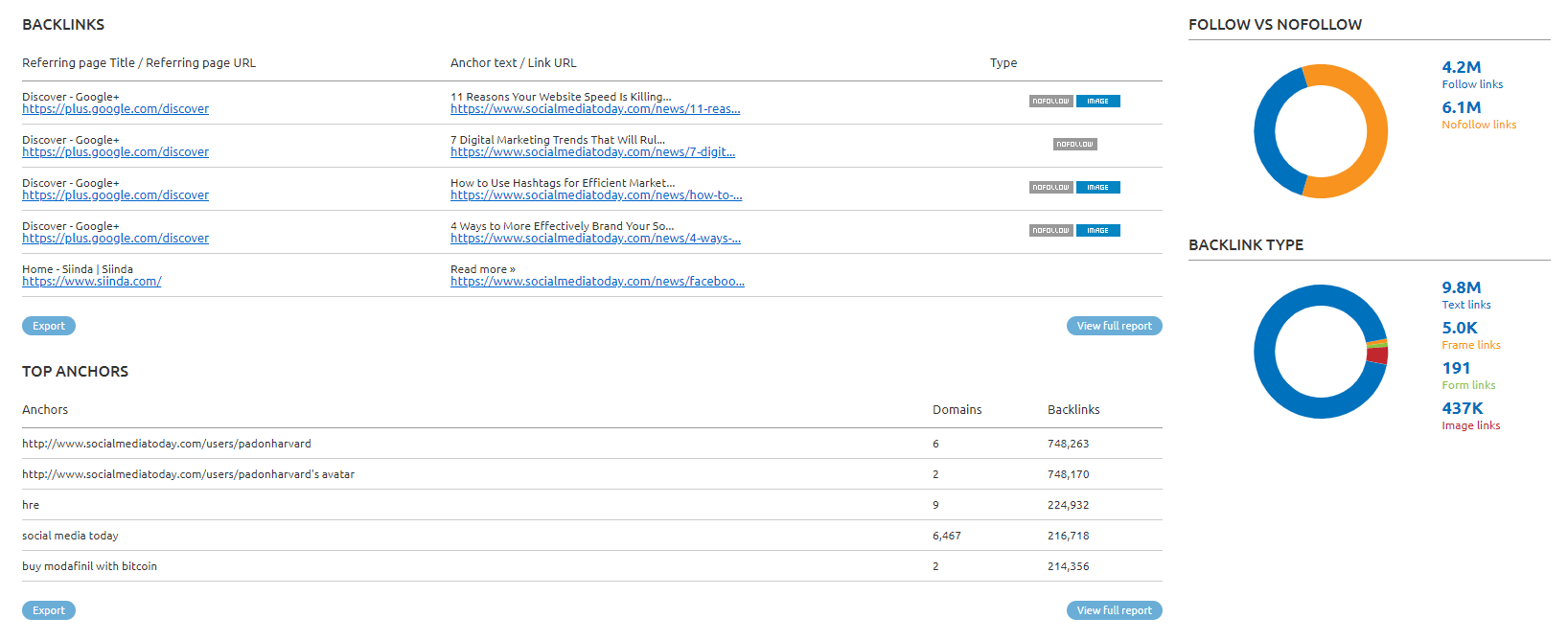Content marketing is an effective way to generate traffic, leads, and become a thought-leader in your industry. Are you currently running a content marketing campaign? Better yet, are you measuring it?
Producing high-quality and actionable content is great, but what really matters is if it’s driving results for your business. That’s why you need to make sure you’re tracking specific KPIs to optimize your campaign over time. All of the metrics we touch on today are easy to measure and say a lot about how your content is performing. It’s not enough to simply produce content. You also need to study how it’s performing so you can improve the ROI and effectiveness of your campaign. Try out the KPIs we outline today and see the results for yourself.
Backlinks
Authoritative links pointing to your website remain one of the most important ranking signals to search engines like Google. Think of it as a voting system. Your website appears more important if lots of other sites link to it, pushing up you the SERPs. This is exactly why you need to be tracking how many links your content generates, especially if you perform outreach campaigns. You can do this with analytics tools like SEMrush. With this tool specifically, you can use their free daily searches component to check how many backlinks your domain has and which individual pieces of content are receiving them.
Use backlink monitoring tools like this to track whether or not the content you publish is attracting any links. You may notice that certain topics or styles of content receive more backlinks than others, creating the opportunity to double down on the best performers.
Social shares
Social media and content marketing go hand in hand. You can use social networks to quickly promote content to a large audience and increase your following. Social sharing also creates a viral effect. This is why the number of social shares is a good metric to track in your content campaigns.
Publishing content and having it shared allows you to reach a very large audience without spending any extra capital. You can track how many social shares content receives within each individual platform. For example, you can track how many retweets, Facebook shares, and Pinterest pins you receive to determine how your content is performing on social media.
Unique visits
One of the overarching goals of creating content is to attract users to your website, right? So it only makes sense to measure how many users your website is obtaining. This can be done through tools like Google Analytics. It will record how many users are coming to your website every single day, along with where they come from and land. Use this data to put more energy into high-quality traffic sources and creating similar content to what’s popular.
Average time spent on page
If users only spend a few seconds on your website and leave, what do you think says about your content? Probably that it needs some work. That or you need to target a different audience that resonates with the topics more deeply. You can see how long users spend on your website through most platform’s dashboards, or once again, via Google Analytics.
Navigating to site content under the behavior tab will display the average time for your top performing pages.
You can improve the average time spent on a web page by:
- Making your content more entertaining through a casual tone and voice
- Adding visuals like pictures, infographics, and videos
- Leading users step-by-step through instructions and tutorials
Bounce rate
Similar to how long users spend on your website, the number of people that leave without navigating to other pages is known as bounce rate. The average bounce rate is 58.18%, so don’t think that if your bounce rate is high that you’re an outlier. In fact, you’re probably about average. The reality is that most users will find your website through organic search, social media, or another channel and consume specific content that interests them before leaving.
However, there are things you can do to improve bounce rate. The first of which is the speed of your website. The longer it takes to load, the more users will leave before it finishes. We’re in the Amazon Prime era where people want things fast, and that includes load times. Similarly, you should consider compressing images and taking advantage of caching. Both of these can help improve user experience and website speed.

